Supply Chain Executive
50+ Supply Chain Executive Interview Questions and Answers

Asked in Corbus

Q. What are the differences and applications of VLOOKUP and XLOOKUP functions in Excel?
VLOOKUP and XLOOKUP are Excel functions used for searching and retrieving data, with XLOOKUP being the newer and more versatile option.
VLOOKUP searches for a value in the first column of a range and returns a value in the same row from a specified column.
XLOOKUP can search in any direction (rows or columns), and can return values from a range based on multiple criteria.
XLOOKUP is more flexible and powerful than VLOOKUP, as it can handle array calculations and return multiple ...read more

Asked in Genpact

Q. What are your salary expectations?
I would expect a competitive salary based on my experience and the responsibilities of the role.
Research the average salary range for Supply Chain Executives in your industry and location.
Consider your years of experience and any specialized skills or certifications you possess.
Highlight your value proposition and how you can contribute to the company's success.
Be open to negotiation and discuss benefits and bonuses in addition to base salary.
Avoid giving a specific number un...read more
Supply Chain Executive Interview Questions and Answers for Freshers

Asked in Corbus

Q. What are the advanced features of Excel and the formulas used within them?
Excel has advanced features like PivotTables, Power Query, and Power Pivot. Formulas like VLOOKUP, INDEX/MATCH, and SUMIFS are commonly used.
Advanced features include PivotTables for data analysis and visualization
Power Query for data cleaning and transformation
Power Pivot for creating data models and relationships
Commonly used formulas like VLOOKUP for searching and retrieving data
INDEX/MATCH for more flexible lookup functions
SUMIFS for summing values based on multiple crite...read more
Asked in Indoin Biolife

Q. How can you identify if an invoice reflects a discounted price or a net price?
Discounted prices can be identified by comparing the original price with the final price after discount.
Check for any discount codes or promotions applied to the invoice.
Compare the original price of the product/service with the final price on the invoice.
Look for any specific mention of a discount or reduced price on the invoice.
Verify the terms of the agreement or contract to see if discounts were negotiated.
Consult with the supplier or vendor to confirm the pricing details...read more

Asked in Apex Auto

Q. If any problem occurs in the work process, how would you resolve it?
Effective problem resolution in work processes involves identifying issues, analyzing root causes, and implementing solutions collaboratively.
Identify the Problem: Clearly define the issue at hand. For example, if there’s a delay in delivery, pinpoint whether it’s due to supplier issues or internal processes.
Analyze Root Causes: Use techniques like the 5 Whys or Fishbone Diagram to understand the underlying causes. For instance, if inventory is low, investigate if it’s due to...read more
Asked in Albino Lifesciences

Q. What do you consider to be key elements in inventory planning and management?
Key elements in inventory planning include demand forecasting, stock optimization, and supplier collaboration.
Demand Forecasting: Utilize historical sales data and market trends to predict future demand. For example, using seasonal trends to adjust stock levels.
Stock Optimization: Implement techniques like ABC analysis to prioritize inventory management based on item value and turnover rates.
Supplier Collaboration: Build strong relationships with suppliers to ensure timely de...read more
Supply Chain Executive Jobs


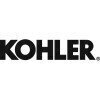
Asked in Diptab Ventures

Q. What would be the cost of hiring a vehicle for 12 hours and 80 kilometers?
The cost per vehicle for 12 hours and 80kms will depend on various factors such as type of vehicle, location, and additional services.
The type of vehicle will affect the cost per hour and per km
The location of the rental company and the pickup/drop-off points will also affect the cost
Additional services such as a driver or fuel may increase the cost
Researching different rental companies and comparing prices is recommended

Asked in Schlumberger

Q. How would you ensure you are buying the best product?
To buy the best product, we need to consider quality, price, reliability, and supplier reputation.
Define the product requirements and specifications
Research potential suppliers and their reputation
Compare prices and quality of products
Consider reliability and delivery time
Negotiate with suppliers for the best deal
Share interview questions and help millions of jobseekers 🌟


Asked in Corbus

Q. What is the concept of supply chain management?
Supply chain management is the coordination and optimization of all activities involved in the sourcing, procurement, production, and logistics of a product or service.
Involves planning, sourcing, making, delivering, and returning products or services
Focuses on efficiency, cost reduction, and customer satisfaction
Utilizes technology and data analytics to improve processes
Examples include inventory management, transportation optimization, and supplier relationship management

Asked in Niine

Q. What are the key practices involved in warehouse management?
Effective warehouse management involves optimizing storage, inventory control, and order fulfillment to enhance operational efficiency.
Inventory Management: Regularly track stock levels to avoid overstocking or stockouts. For example, using an inventory management system like WMS.
Layout Optimization: Design the warehouse layout for efficient movement of goods. For instance, placing fast-moving items near shipping areas.
Order Picking Strategies: Implement methods like batch pi...read more

Asked in Schlumberger

Q. What are the steps in the Procurement Process?
Procurement process involves acquiring goods and services from external sources.
Identifying the need for goods or services
Supplier selection and evaluation
Negotiating contracts and terms
Purchase order creation and approval
Receipt of goods and services
Invoice processing and payment
Supplier performance evaluation
Asked in Albino Lifesciences

Q. Are you updated on current supply chain management trends?
Yes, I stay updated on supply chain trends like digital transformation, sustainability, and risk management.
Digital Transformation: Companies are leveraging AI and IoT for real-time data analytics, improving decision-making.
Sustainability: Many organizations are focusing on eco-friendly practices, such as reducing carbon footprints and waste.
Risk Management: Enhanced strategies are being developed to mitigate disruptions, as seen during the COVID-19 pandemic.
E-commerce Growth...read more
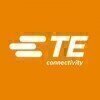
Asked in TE Connectivity

Q. What types of transactions are used to manage the process?
Transactions are used to facilitate the exchange of goods or services between parties in a supply chain.
Transactions involve the transfer of ownership or rights to goods or services from one party to another.
They can include purchase orders, invoices, receipts, and payments.
Transactions help track the movement of goods or services through the supply chain and ensure proper documentation and payment.
Examples of transactions include placing an order with a supplier, receiving g...read more

Asked in Dabur

Q. Do you know coding? And what do you about excel
Yes, I know coding and Excel well.
Proficient in coding languages such as Python and Java
Experience in creating macros and using advanced functions in Excel
Ability to automate tasks using VBA in Excel
Familiarity with data analysis and visualization tools such as Power BI

Asked in Wuerth

Q. What do you know about supply chain management?
Supply chain management involves the coordination and optimization of all activities involved in the production and delivery of goods and services.
It includes planning, sourcing, manufacturing, logistics, and customer service.
Effective supply chain management can improve efficiency, reduce costs, and increase customer satisfaction.
Examples of supply chain management tools include inventory management software, transportation management systems, and demand forecasting tools.

Asked in Flipkart

Q. What is supply chain management? Give an example.
Supply chain management involves the coordination and optimization of all activities involved in the production and distribution of goods and services.
Involves planning, sourcing, manufacturing, and delivering products to customers
Focuses on efficiency, cost-effectiveness, and customer satisfaction
Examples include inventory management, transportation logistics, and supplier relationship management

Asked in Outlook Publishing

Q. What is the difference between SCM and logistics?
SCM focuses on the entire supply chain process, while logistics is a subset of SCM that deals with the transportation and storage of goods.
SCM involves the planning, coordination, and execution of activities across the entire supply chain, from sourcing raw materials to delivering the final product to customers.
Logistics specifically deals with the transportation, storage, and distribution of goods within the supply chain.
SCM encompasses a broader range of activities such as ...read more

Asked in SAVA Healthcare

Q. Documentation of raw materials receiving process
Documentation of raw materials receiving process is crucial for traceability and quality control.
Create a standardized receiving form for each raw material shipment
Record details such as supplier name, date received, quantity, and batch/lot number
Implement barcode scanning or RFID technology for efficient tracking
Store all documentation in a centralized database for easy access during audits

Asked in Corbus

Q. What is the concept of supply chain?
Supply chain is the network of organizations involved in the creation and distribution of a product or service.
Supply chain involves the flow of goods, information, and finances from the initial supplier to the end customer.
It includes activities such as sourcing, production, warehousing, transportation, and distribution.
Efficient supply chain management can lead to cost savings, improved customer satisfaction, and competitive advantage.
Examples of supply chain activities inc...read more
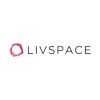
Asked in LivSpace

Q. How would you manage the entire service component of the supply chain?
Managing entire services part involves strategic planning, coordination, and optimization of resources.
Develop a comprehensive service strategy aligned with business goals
Implement efficient processes for service delivery and management
Utilize technology and data analytics to optimize service operations
Collaborate with internal and external stakeholders to ensure seamless service delivery
Monitor performance metrics and KPIs to track service effectiveness
Continuously improve s...read more
Asked in Indoin Biolife

Q. What are the criteria for generating an e-way bill?
Criteria for generating eway bill includes value of goods, distance of transportation, and mode of transportation.
Value of goods must exceed Rs. 50,000 for inter-state transportation.
Distance of transportation must be more than 10 km for generating eway bill.
Mode of transportation can be road, rail, air, or ship.
Eway bill is required for movement of goods worth more than Rs. 50,000 within the state as well.
Asked in Enggmech Engineers

Q. Do you handle the mailing of dispatched materials?
Yes, the mail of dispatched material is crucial for tracking and communication.
The mail of dispatched material includes important information such as tracking numbers, delivery dates, and recipient details.
It helps in ensuring timely delivery and resolving any issues that may arise during transit.
Examples of mail related to dispatched material include shipping notifications, invoices, and packing slips.

Asked in Roha Dyechem

Q. Do you have work experience with import documents?
Yes, I have work experience in import document.
I have worked with various import documents such as commercial invoices, bills of lading, and customs declarations.
I am familiar with the regulations and requirements for importing goods into different countries.
I have experience in verifying the accuracy of import documents and ensuring compliance with import laws.
I have also worked with import brokers and freight forwarders to ensure timely and efficient delivery of goods.

Asked in Bira 91

Q. Do you know how to create a purchase order?
Yes, I know how to make a purchase order.
To make a purchase order, you need to gather information about the items to be purchased, such as quantity, description, and price.
You then create a purchase order document, either manually or using a software system.
Include the vendor's information, delivery address, and payment terms in the purchase order.
Review and verify the purchase order for accuracy before sending it to the vendor.
Keep a record of the purchase order for future r...read more

Asked in Dabur

Q. What do you know about system software?
System software is a type of computer software that manages and controls the hardware and other software on a computer system.
System software includes operating systems, device drivers, and utility programs.
It provides a platform for application software to run on.
Examples of system software include Windows, macOS, Linux, and Android operating systems.
Device drivers allow the operating system to communicate with hardware devices.
Utility programs perform tasks such as disk man...read more

Asked in Novozymes South Asia

Q. What are the steps of the supply chain?
The steps of the supply chain include sourcing, procurement, production, distribution, and customer service.
Sourcing: Finding and selecting suppliers for raw materials or components.
Procurement: Purchasing the necessary materials or components from chosen suppliers.
Production: Manufacturing or assembling the final product.
Distribution: Transporting the finished product to warehouses or directly to customers.
Customer service: Providing support and assistance to customers befor...read more

Asked in Stellar Value Chain Solutions

Q. What do you know about supply chain?
Supply chain refers to the network of organizations involved in producing and delivering a product or service to customers.
Supply chain involves the flow of goods, information, and finances from the initial raw materials to the final customer.
Key components of supply chain include sourcing, production, inventory management, logistics, and distribution.
Efficient supply chain management can lead to cost savings, improved customer satisfaction, and competitive advantage.
Examples...read more
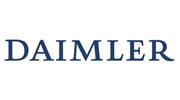
Asked in Daimler

Q. Tell me about your experience in supply chain management.
I have extensive experience in managing end-to-end supply chain operations for various industries.
Managed procurement, inventory management, logistics, and distribution for a consumer goods company
Implemented lean principles to reduce waste and improve efficiency in a manufacturing supply chain
Collaborated with suppliers to ensure timely delivery of raw materials for a pharmaceutical company
Developed and executed a global supply chain strategy for a technology company
Led cros...read more

Asked in Cresc Datasoft

Q. Why Cresc? Why supply chain?
Cresc's innovative approach to supply chain management caught my attention.
Cresc's use of technology to optimize supply chain processes is impressive
I am passionate about finding efficient solutions to complex problems
Supply chain management is a critical component of business success
Cresc's commitment to sustainability aligns with my values

Asked in LivSpace

Q. How would you approach cost savings?
Cost saving can be achieved through strategic sourcing, process optimization, and supplier negotiations.
Implementing strategic sourcing practices to identify cost-effective suppliers
Optimizing processes to reduce waste and inefficiencies
Negotiating with suppliers for better pricing and terms
Leveraging technology for automation and efficiency
Consolidating orders to benefit from volume discounts
Interview Questions of Similar Designations
Interview Experiences of Popular Companies




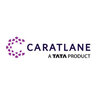



Reviews
Interviews
Salaries
Users
















